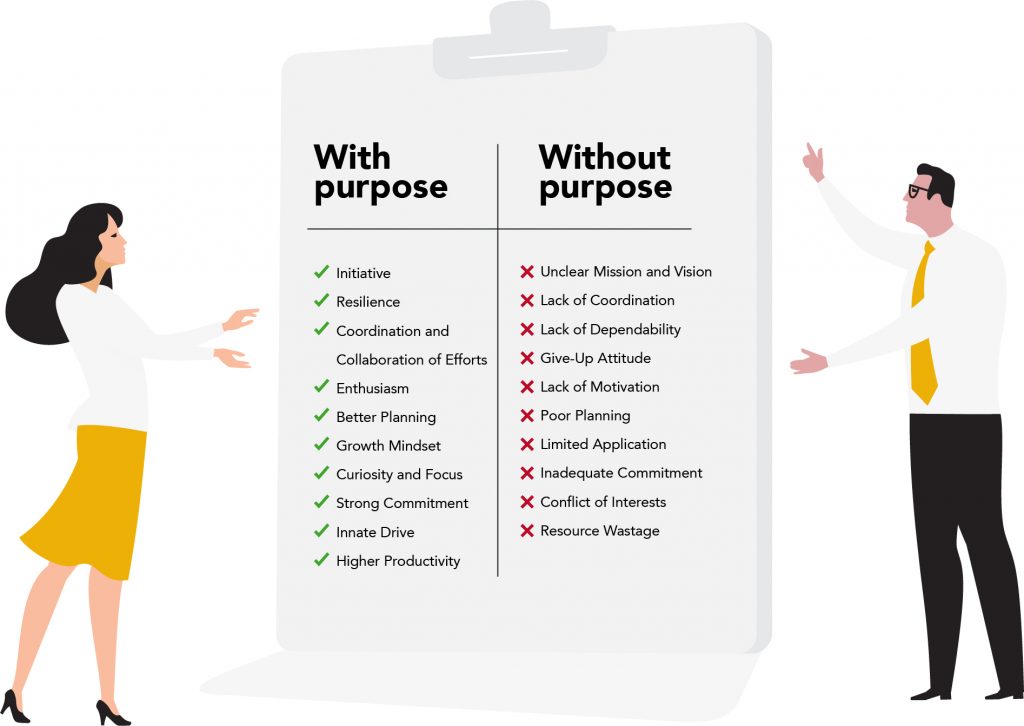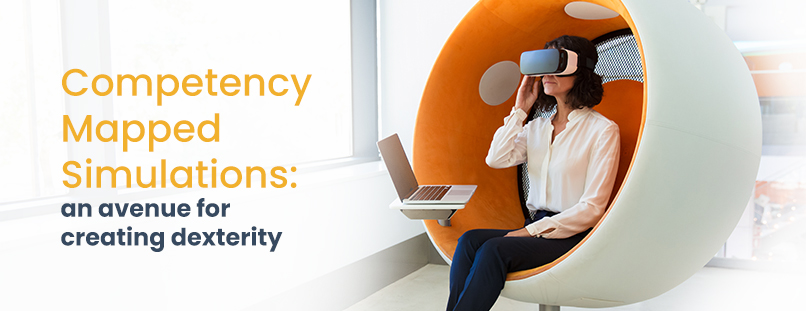A purpose-driven culture encompasses a broad spectrum of a comprehensive business strategy that connects short-term goals with long-term goals and turns individual effort into team collaboration. The nature of work heavily relies on a high-quality workforce having a clear vision and purpose, which is the bedrock of organizational growth and value. Establishing a predefined vision and purpose coherently with employees’ skills and knowledge orchestrates a clear pathway that everyone can follow without going off the mark. A few reasons why businesses never meet their objectives is because of:
- Lack of focus and vision
- Lack of collaboration
- Incoherent business strategy
- Inadequate talent
- Irregular track of work progress
- Improper allocation of resources
When the purpose is in oblivion, organizations bear the brunt! Acknowledging the challenges getting in the way of daily workflow and executing ways to address them is vital to help you understand and eliminate the perils of ineffective business planning and goal setting.
The Power of Purpose
Having a purpose defines the start and end of a goal. Without that, business goals will never see the finish line. Fundamentally, purpose driven learning does not equate learning with ‘mere completion of tasks’ but ‘achieving the goals by any possible means. By embedding purpose in learning, organizations will be geared towards cultivating employable skills, creating impactful and lasting learning, and reinforcing values and behaviors that are attuned to organizational purpose. Here’s why there is a compelling need to embed purpose in every action plan that the organization undertakes:
- Standardization: Standardization brings diverse and individual competencies, skills, and knowledge in alignment with the overall business goal and the industry benchmarks. A well-defined standard will set a common foundation for improved communication, enhanced performance and productivity, reduced errors, and high-quality results.
- Clarity: Clarity of purpose and vision is an important factor that affects the overall business objective. Unless employees don’t know the ‘why’ behind the ‘what’, they will not be able to bring in the desired outcomes. Therefore, employees must be on the same page as their employers for reduced conflicts, strong collaboration, and regular communication.
- Growth: A well-thought-out purpose is an important determinant of business growth. This is why, businesses that tie purpose to every task and action can increase their stability and profitability, differentiate themselves from their competitors, and improve their business value.

Putting Skills to Work
Skills and knowledge lie at the forefront of on-the-job performance and application. Every individual comes with a different set of skills, knowledge, and behavior, allowing employees to advance in their career ladder and helping businesses achieve their unified goal. However, it is concerning when the same outcome is expected from a large number of employees who do not share the same set of values, attitudes, and behaviors. Simply follow the three steps to keep your purpose on track:
- Plan: Charting out a clearly defined plan diminishes the risk of uncertainty and helps outline the proper guidelines that everyone can work towards. Organizations that plan strategically are prepared well in advance to address the challenges that may hinder their productivity and performance.
- Implement: Once the plan is laid down, the acquired skills and knowledge need to be put to action. Implementation is an ongoing process which gives employees an opportunity to execute the plan in line with strategic goals and discover their strengths and weaknesses with the help of regular feedback.
- Evaluate: Evaluation is the last and the most crucial step that determines the overall outcomes gained from learning and how they will help meet the business objectives. This process entails:
- Measuring performance or behavior change as compared to the baseline matrix
- Measuring the KPIs against organizational performance standards
- Reviewing the performance on a timely basis and providing constructive feedback
Conclusion
Because of the volatile nature of business, purpose driven learning is an absolute necessity for organizations to respond to critical situations and challenges in meeting their business objectives.






























